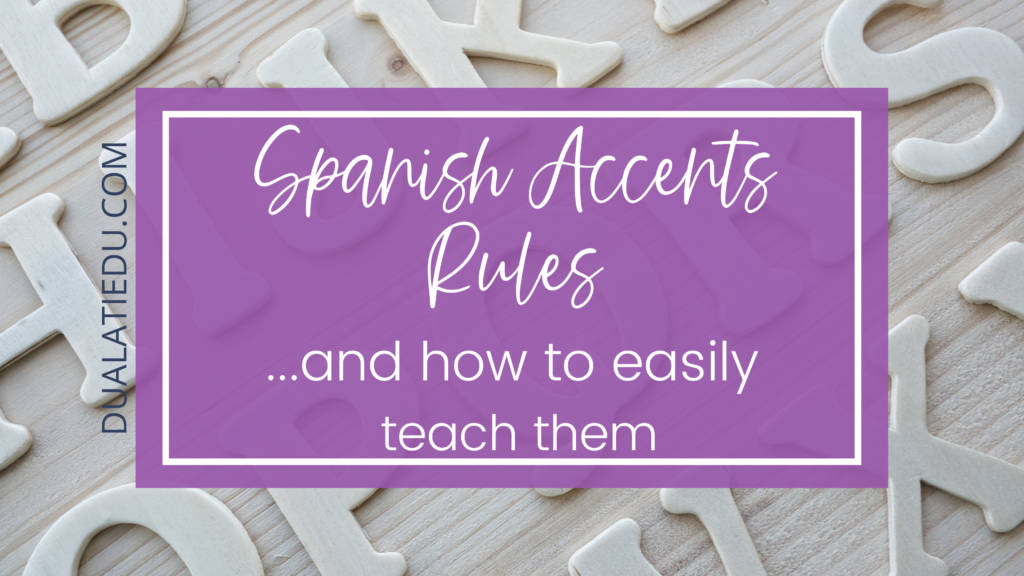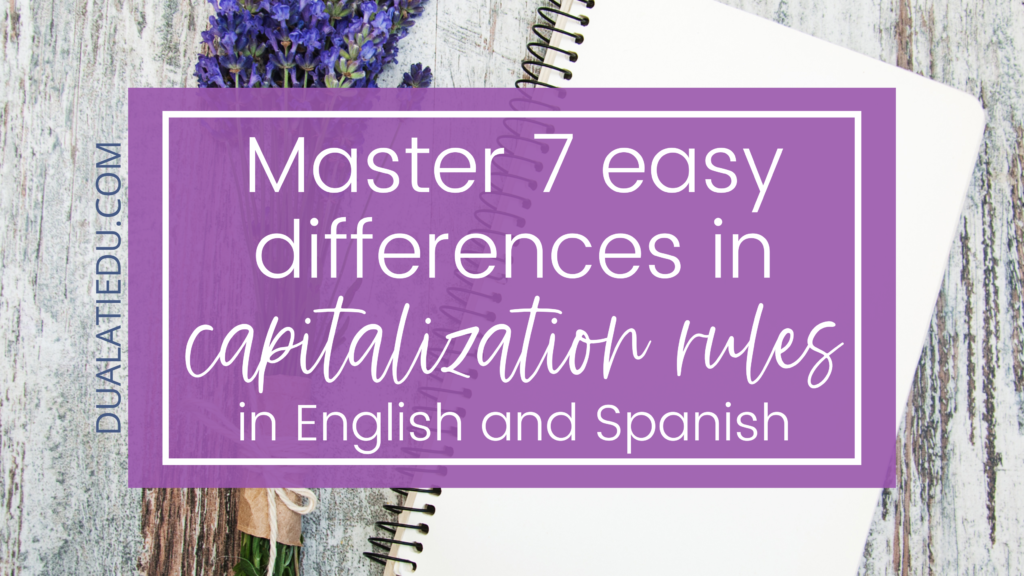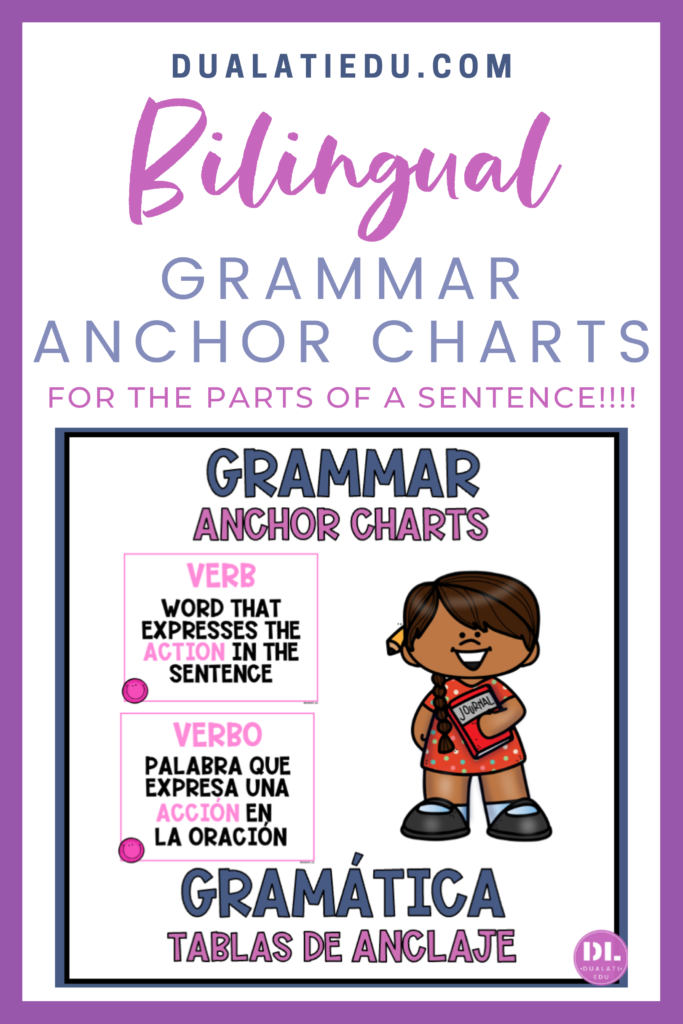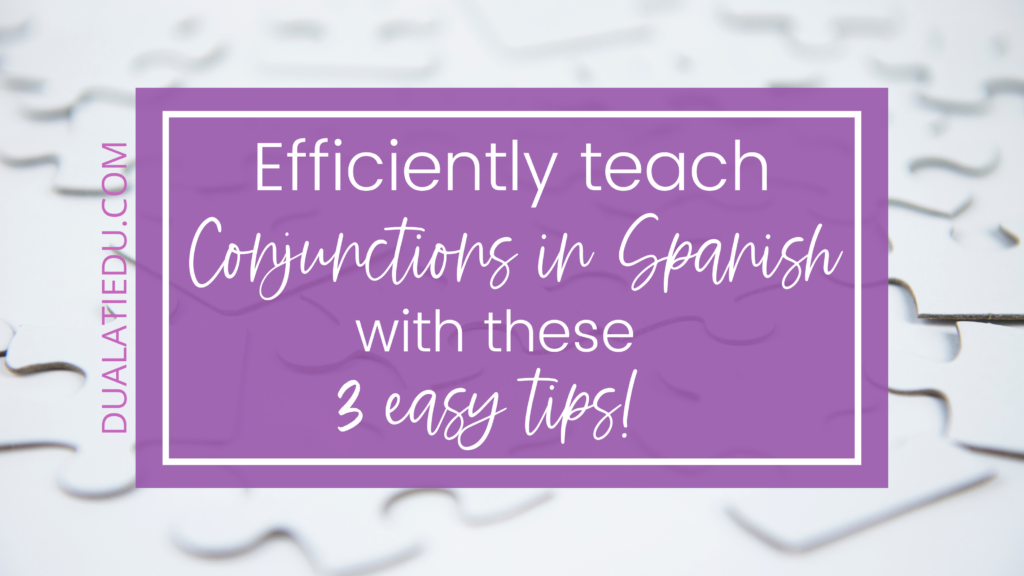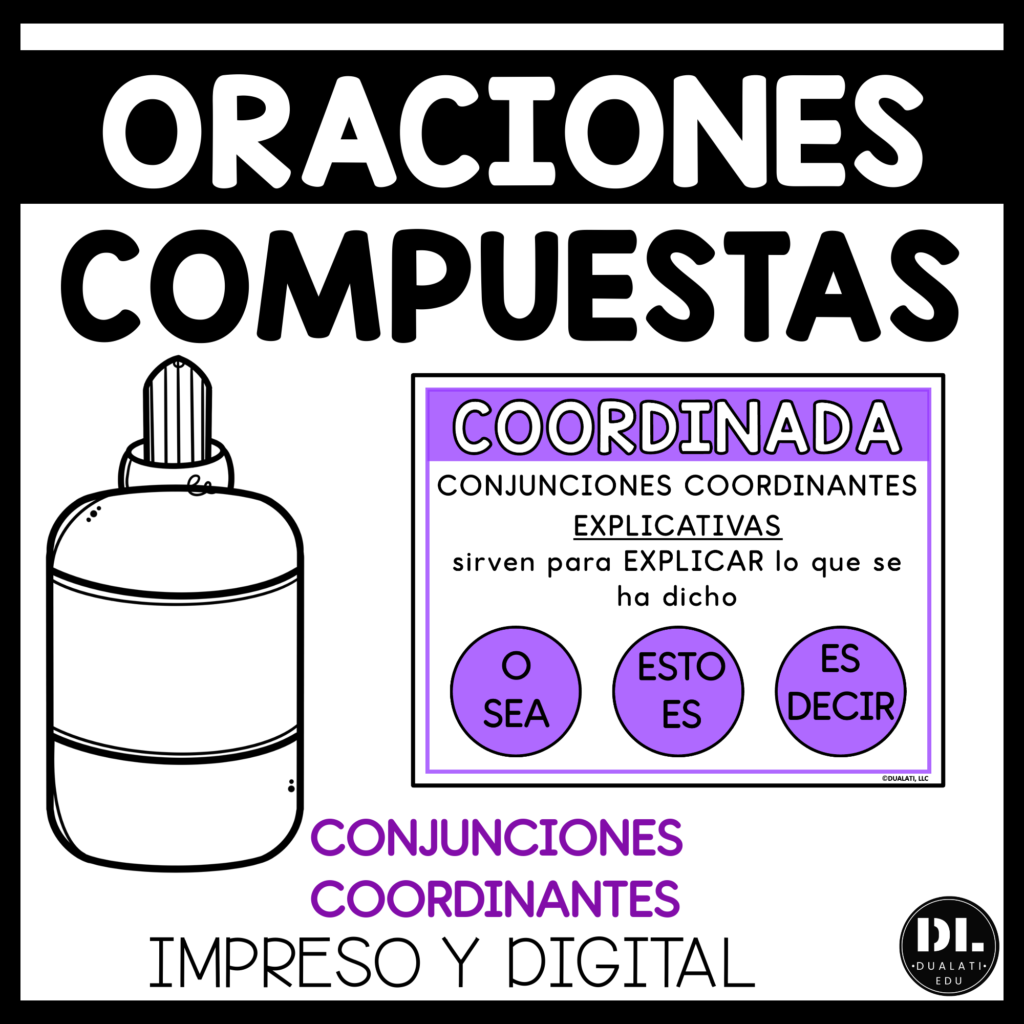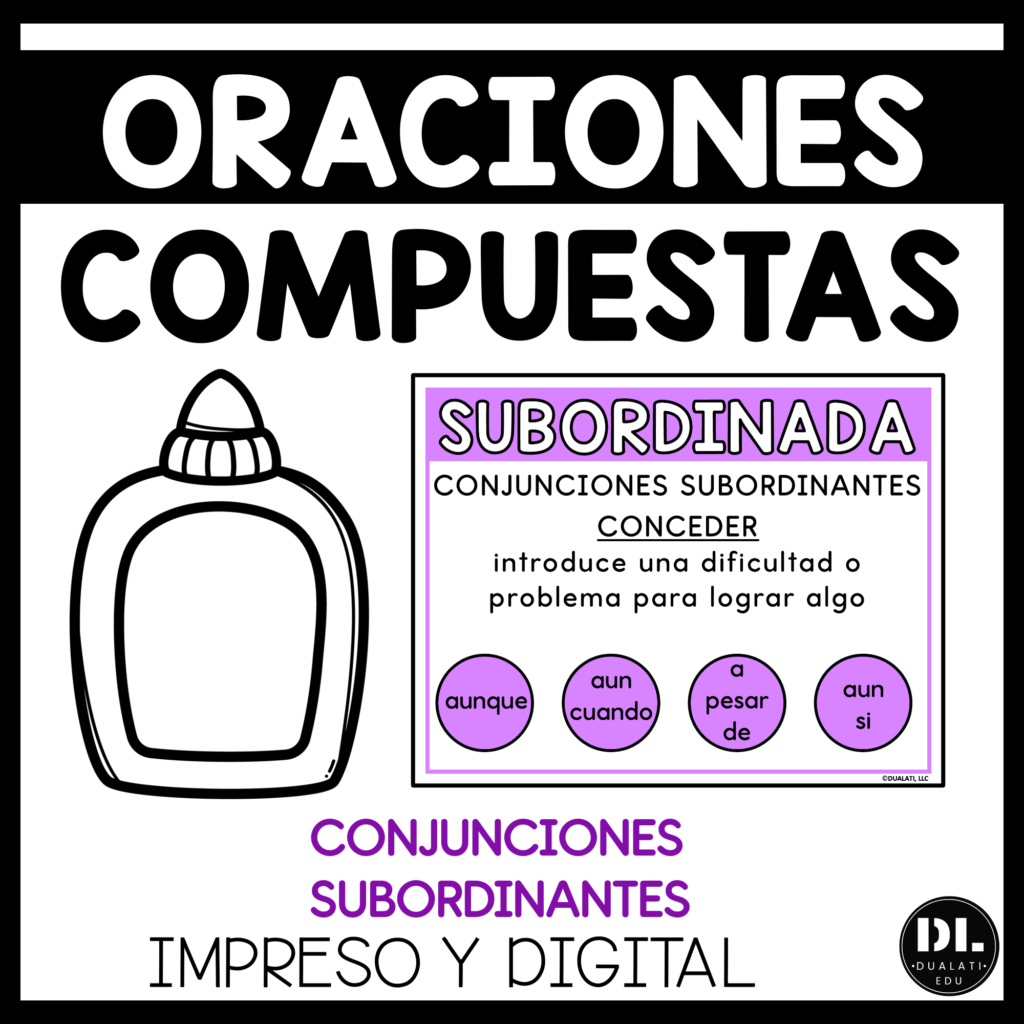Finding a clear strategy for teaching conjunctions in Spanish can be easier than you think.
Yes, I understand. It’s one of those topics that can be confusing since the concept is pretty abstract.
However, let’s look at 3 tips you can implement in your classroom to help guide you and your students.
Tip #1 List of conjunctions in Spanish
Students need to have all the conjunctions available at their fingertips!
It would be best to introduce them organized by groups.
First, introduce coordinating conjunctions.
Try to substitute words used to describe the conjunction with an easier synonym or its meaning.
For example, instead of saying Conjunciones Conjuntivas, title that detailed list of conjunctions under the word ‘Unir´.
Students need to understand first the concept of joining two grammatically equal parts.
We present some conjunctions categories here in a quick visual format.
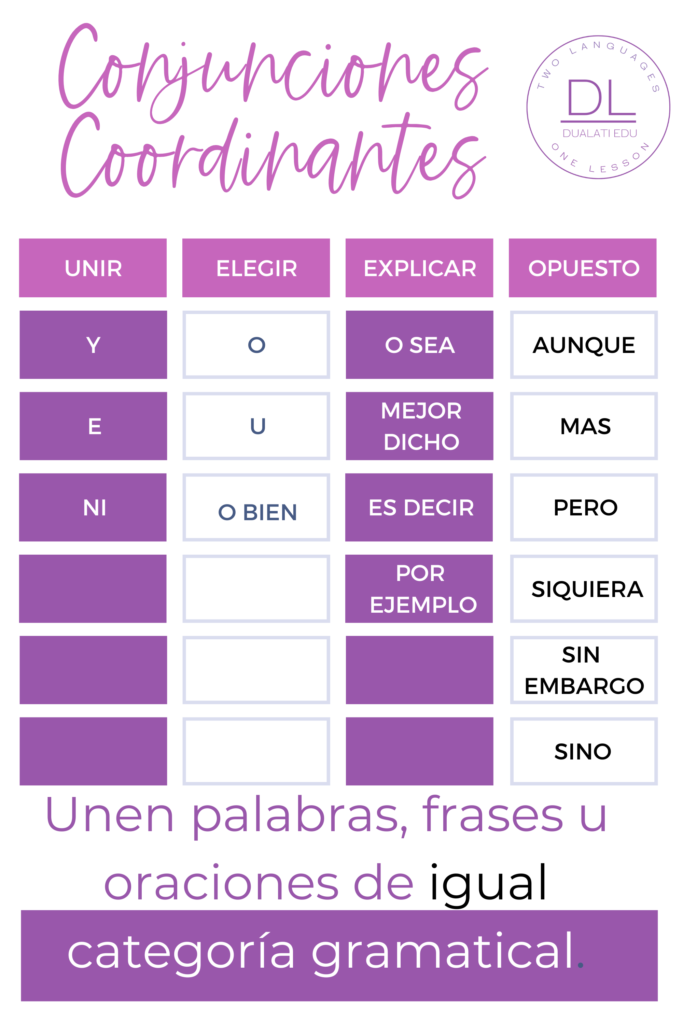
Here is a resource for you to use with your students!
Then, ease into introducing common subordinating conjunctions.
Continue to introduce the words organized by a specific list such as the one below. As with coordinating conjunctions, make sure you substitute the names of the official categories with words that students can easily understand.

Here’s a resource to practice compound sentences with subordinating conjunctions.
Tip #2 Conjunctions in Spanish practice
Next, have students practice identifying these words. It is essential that they automatically identify these as conjunctions.
You can provide hands-on activities for them to do so.
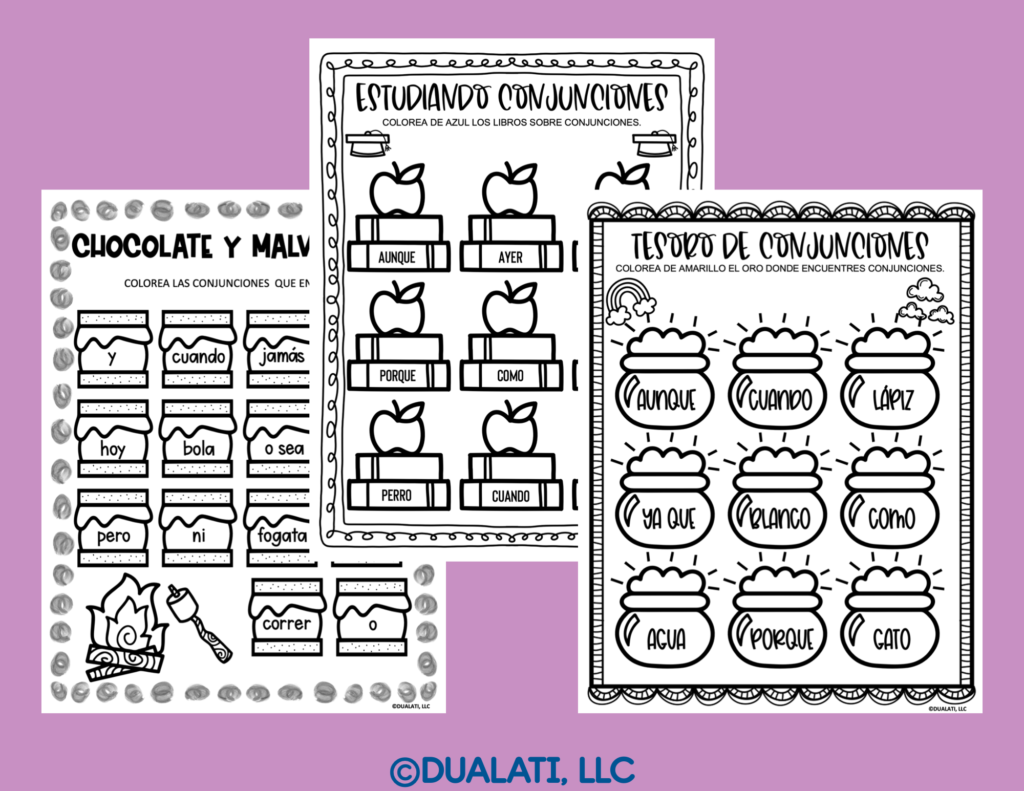
You can find those worksheets here.
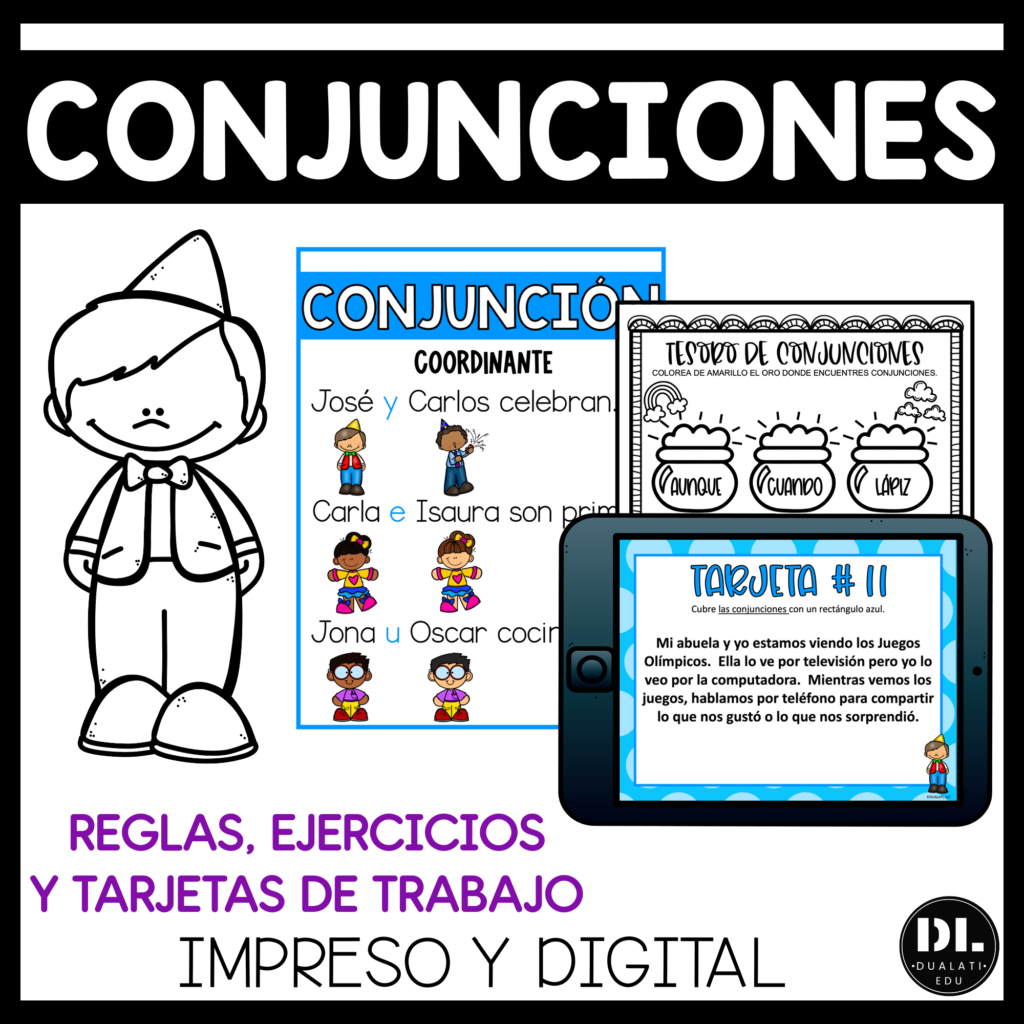
Tip #3 Placing a comma in sentences with conjunctions
Understanding when to use a comma in a sentence with conjunctions creates much confusion amongst elementary students.
Therefore, teach the rules with a concise approach. I follow these 3 steps.
Step 1. Introduce (or re-introduce depending on how you implemented Tip #1) the concept of independent and dependent clauses.
Use visuals!
For example, use squares of the same size for two independent clauses within one sentence.
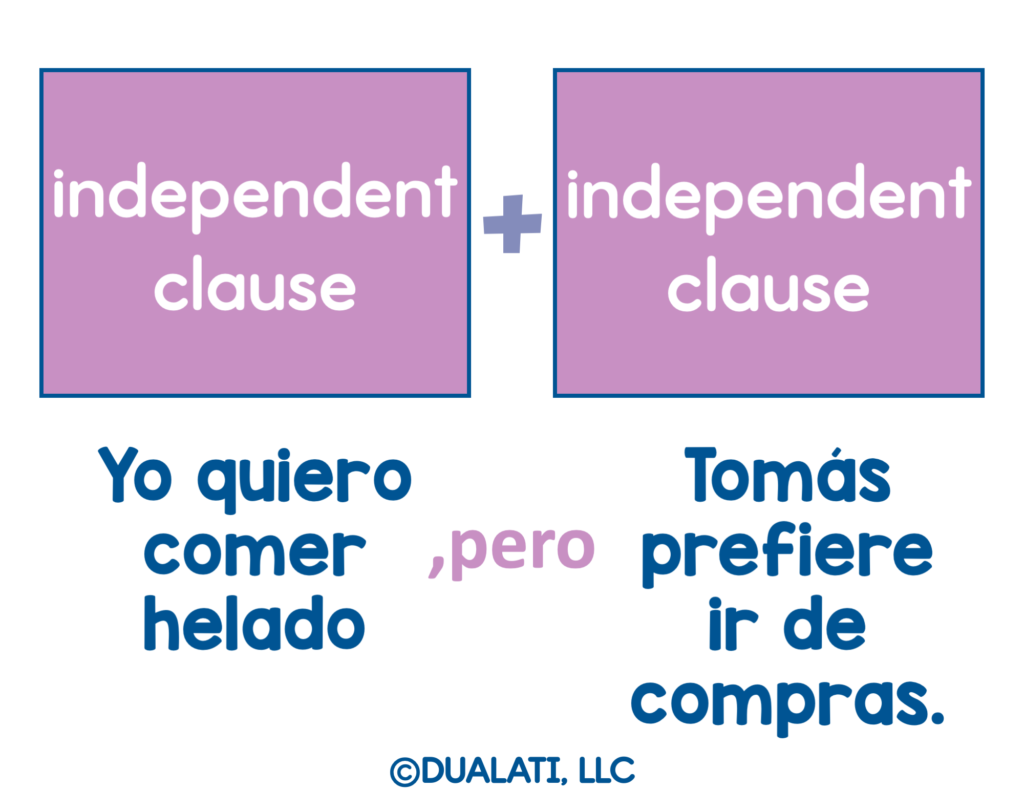
Use two squares of different sizes to represent an independent and a dependent clause within the same sentence.
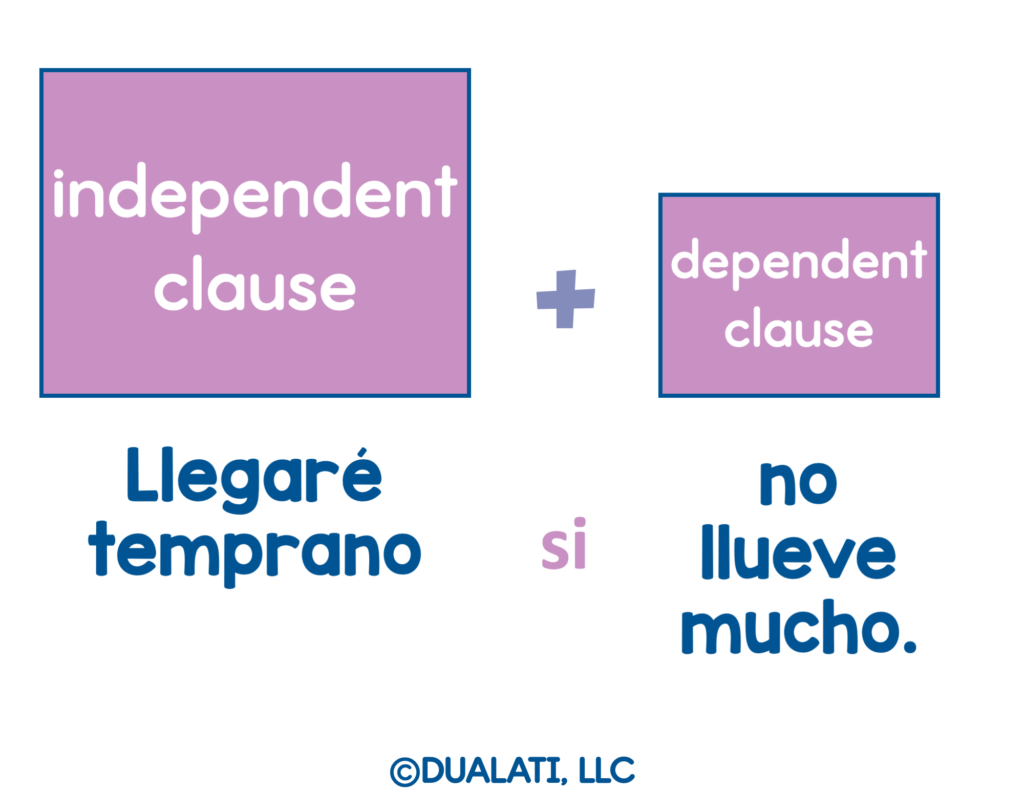
Step 2. Identify the position of the subordinating conjunction in the sentence
Have students circle the conjunctions present in the sentence. If the conjunction is in the middle of the sentence (inverted order of the sentence), then it does not need a comma.

If the sentence begins with a subordinating conjunction, they must identify where the independent clause begins and place a comma before it.

Step 3. Commas in sentences with adversative conjunctions
Sentences that contain adversative (express contrast or opposition) conjunctions MUST have a comma placed before the conjunction.
I point this out specifically because the other conjunctions have rules as to when to use and not to use commas.
For this particular type of conjunction, you must have place one.
Example

Following these few steps will help elementary students begin to understand the broad, but useful vocabulary and rules on how to effectively use conjunctions.
if you want more practice for your students, click here.
Check out these two blogs for more information about accents and capitalization rules in Spanish!
